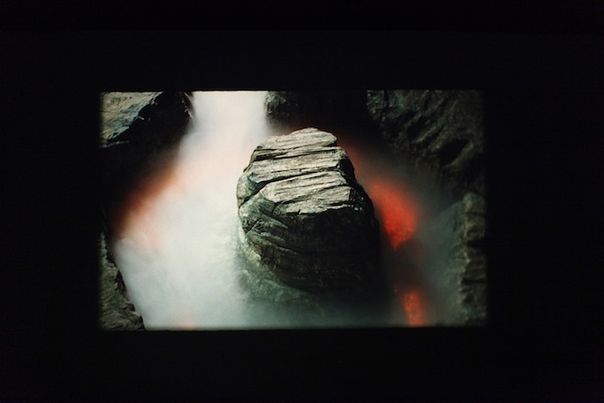Reflection on Perception
Andrei Kartashov of the 2014 Talent Press reports from an exhibition of visual art in the St. Agnes church, at the fringes of the Berlinale.

This year, a fair part of Berlinale’s Forum Expanded section, devoted to innovative works of cinema and beyond, is dedicated to space, in the widest sense of the word. “What do we know when we know where something is?”, is the question that gives the programme its title. Some possible answers are presented at an exhibition housed in the St. Agnes church in Kreuzberg.
Azin Felzabadi’s installation “Chronicles from Majnun until Layla” presents an imaginary museum of Iranian history based on a school textbook, revealing the totalitarian tendency to present history as something solid and steady, like a building. In Jakrawal Nilthamrong’s two-screen installation HANGMAN, son of Thailand’s last executioner participates in a re-enactment of an execution, which for him, is a way to find out his late father’s spiritual whereabouts. The same artist’s 35mm work, INTRANSIT, inspired by Thai sci-fi movies of the 1960s, confronts the virtual character of new technologies that cannot be defined by space.
Among other works that deal with technological change is Robert Fenz’s TEA, a film that documents art collector Erika Hoffman-Koenige making and drinking tea in her dining room, is projected in a loop. The ritualised repetition of her actions and her confined domestic environment evokes Chantal Akerman’s classic film JEANNE DIELMAN (1975), but the sophisticated, enormous and noisy apparatus looping the film is part of the installation in its own right. Ken Jacobs, on the other hand, makes use of a new technology – his work, A PRIMER IN SKY SOCIALISM is a 3D video. A montage of impressionistic images shot on the Brooklyn Bridge seen through stereoscopic glasses on a gallery wall prompts a reflection on our perception of depth that was so important to painters of the Renaissance. André Bazin’s remark that perspective was “the original sin of Western painting”, substituting aesthetics with psychological need for realism, remains unchallenged in this work.

